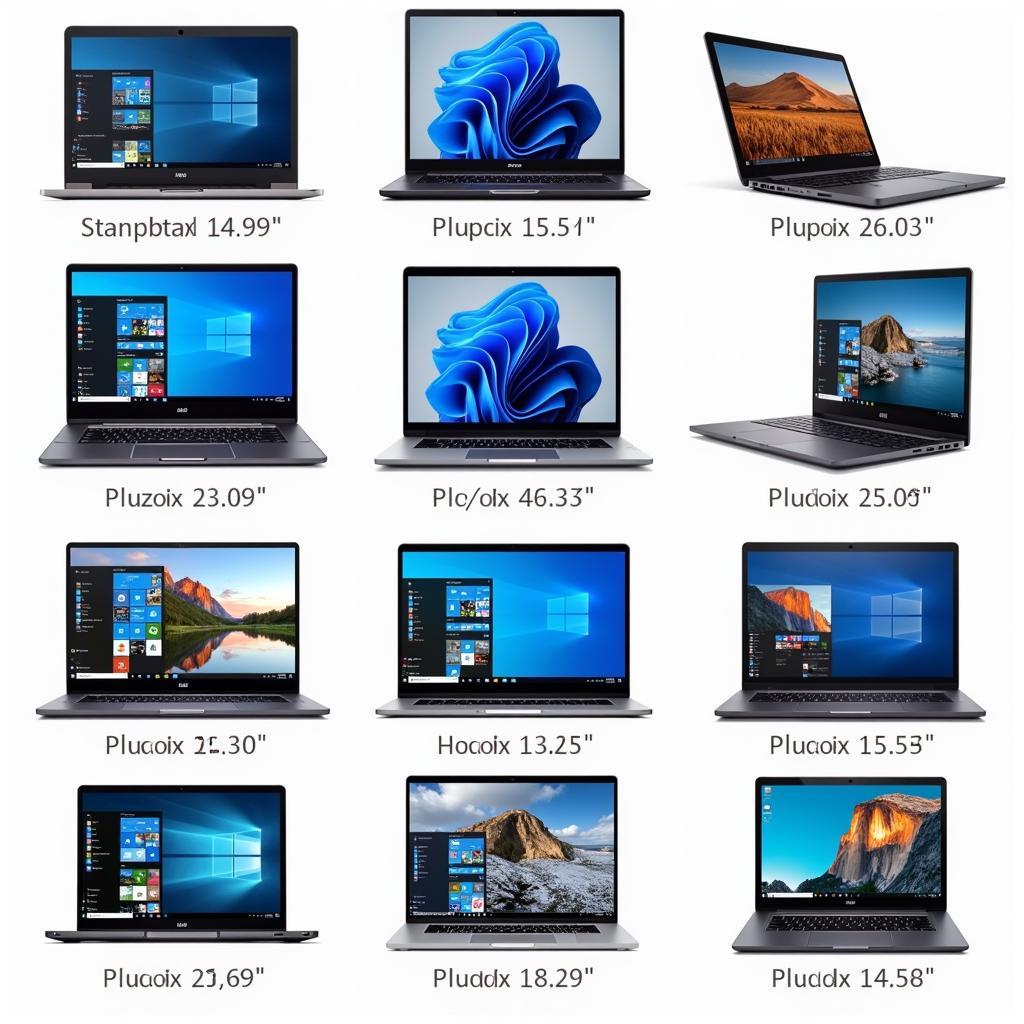Building Your Perfect Laptop: A Comprehensive Guide
October 20, 2024Choosing the right laptop can be a daunting task, especially with the vast array of options available. Whether you’re a student, a professional, or a casual user, building your perfect laptop allows you to tailor the components to your specific needs and budget. This guide will walk you through the essential factors to consider when selecting each part, empowering you to make an informed decision.
Understanding Your Needs and Budget
Before diving into the technical specifications, it’s crucial to define your laptop usage patterns and budget constraints.
- What tasks will you primarily use the laptop for? Are you a gamer who needs high-end graphics, or a writer who prioritizes a comfortable keyboard and long battery life?
- What software applications do you frequently use? Demanding programs like video editing software or CAD require more powerful processors and RAM.
- What is your budget range? Setting a realistic budget will help you narrow down your options and prioritize components that align with your financial limitations.
Key Components to Consider
Processor (CPU)
The processor is the brain of your laptop, responsible for executing instructions and running applications.
- Intel Core i5 and i7: These processors offer a balance of performance and affordability, suitable for most everyday tasks, multimedia consumption, and light gaming.
- AMD Ryzen 5 and 7: AMD’s Ryzen processors have gained popularity for their competitive performance, often exceeding Intel’s offerings in multi-core workloads.
- Apple M1 and M2: Apple’s custom-designed processors for their MacBooks deliver impressive performance and energy efficiency, particularly for tasks like video editing and graphic design.
Memory (RAM)
RAM determines how many applications and processes your laptop can handle simultaneously without slowing down.
- 8GB: Sufficient for basic tasks like web browsing, word processing, and email.
- 16GB: Ideal for multitasking, running demanding applications, and moderate gaming.
- 32GB and above: Recommended for professional workloads like video editing, 3D modeling, and software development.
Storage (SSD vs. HDD)
Storage is where your operating system, applications, and files are stored.
- Solid State Drive (SSD): Significantly faster than HDDs, resulting in quicker boot times, application launches, and file transfers. Opt for at least 256GB, with 512GB or 1TB being ideal for larger storage needs.
- Hard Disk Drive (HDD): More affordable than SSDs but slower. While not recommended for the primary drive, an HDD can serve as secondary storage for large files.
Display
The display size and resolution impact your viewing experience.
- Screen Size: 13-14 inches offer portability, while 15-16 inches provide a larger workspace.
- Resolution: 1920×1080 (Full HD) is standard, offering sharp visuals. For higher pixel density and more screen real estate, consider 2560×1440 (QHD) or 3840×2160 (4K).
 Exploring Laptop Display Options
Exploring Laptop Display Options
Graphics Card (GPU)
The GPU handles the processing of images, videos, and games.
- Integrated Graphics: Sufficient for everyday tasks and light multimedia consumption.
- Dedicated Graphics Card: Necessary for demanding games, video editing, and 3D modeling. NVIDIA GeForce RTX and AMD Radeon RX series are popular choices.
Operating System (OS)
The operating system determines the look, feel, and functionality of your laptop.
- Windows: The most popular operating system, known for its compatibility with a wide range of software.
- macOS: Apple’s operating system, exclusive to MacBooks, offers a user-friendly interface and a robust ecosystem of applications.
- Chrome OS: Google’s lightweight operating system, ideal for web browsing, email, and basic tasks.
Conclusion
Building your perfect laptop is an empowering process that allows you to create a device tailored to your specific requirements. By carefully considering your needs, budget, and the key components discussed above, you can confidently navigate the world of laptop customization and assemble a machine that perfectly complements your digital lifestyle.
Remember to research specific components and models further to ensure they align with your expectations and budget.
FAQs
1. Can I upgrade the RAM or storage after purchasing a laptop?
Upgradability varies depending on the laptop model. Some laptops allow RAM and storage upgrades, while others have soldered components, making upgrades difficult or impossible.
2. What is the importance of battery life?
Battery life is crucial for portability. Aim for a laptop that offers at least 8 hours of mixed usage on a single charge.
3. Should I prioritize a touchscreen display?
Touchscreen displays offer convenience for some users, but they are not essential for everyone. Consider your usage patterns and preferences.
Need Help Building Your Dream Laptop?
Contact us today for expert advice and personalized recommendations. Our team is here to guide you through the process and help you create the perfect laptop that empowers your digital endeavors.
Call us: 0915117113
Email us: [email protected]
Visit us: Tổ 3 Kp Bình An, Phú Thương, Việt Nam, Bình Phước 830000, Việt Nam
We’re available 24/7 to assist you.